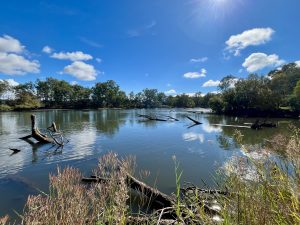Our seasonal Slow Walks series with Sue Brunskill and Karen Retra has commenced, with walks held in Castle Creek and Swainsona reserves in late April.
Both were notable in this most gentle of seasons for the quiet preparations happening to ready plants, birds and insects for the coming winter and spring.
We saw evidence on tree trunks of Grass-carrying wasps (Isodontia) bedding down their young for winter. These are solitary native wasps that commonly fill holes in trees with crickets or grasshoppers as food for their young, before sealing the entrance with grass.
Wattle flowers are forming already – tiny now but growing every day. Likewise, we saw the leaves of winter-flowering orchids emerging, almost impossible to identify at this stage of their cycle, but exciting nevertheless to see their emergence from beneath the soil and anticipate those very special flowers.
Autumn does have it’s stars in the bush and we saw many different species of fungi, sightings made all the more interesting using hand mirrors and magnifying lenses to see the delicate gills and details of these incredible structures. Our star insect was definitely the Chorista australis that we found hanging on a grass stem (pictured above). This is a type of scorpionfly peculiar to Australia and only sighted in autumn.
Our winter walks in these reserves will tell a different story again – we look forward to catching up on those orchids and what’s happened to our Grass-carrying wasp young in particular! You can see more about our upcoming seasonal walks here.
Parklands Albury Wodonga acknowledges the support of the Victorian Government and the Ross Trust for this program.







